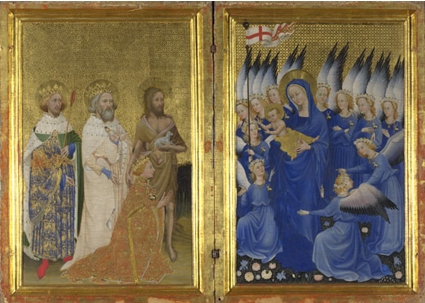The Wilton Diptych: Andrew Graham-Dixon deciphers the royal message for so long concealed within medieval England's most famous painting
ONE OF the most remarkable things painting can do is take you instantly elsewhere, plunge you into an alien and distant world. ''Making and Meaning: the Wilton Diptych'', at the National Gallery, a thoroughly engrossing exhibition devoted to the most enigmatic painting to survive from the English middle ages, is a vivid demonstration of the transporting capacities of art. It is also an object lesson in just how much - how much emotion, belief, aspiration and failure - can be contained on no more than a couple of tablets of painted wood.
The Wilton Diptych has been a mystery for centuries. The painting's blend of naturalism and otherworldliness is both subtle and slightly puzzling: its most famous figures, those faintly insouciant long-necked angels with the most famous angels' wings in art, are a strange and compelling hybrid of real people and real birds, supernatural beings formed from a blend of observation and imagination. But they are just one part of an intricate symbolic scheme that has never been satisfactorily deciphered.
What, exactly, is the nature of the encounter which the picture depicts? What is the relationship between the kneeling King Richard II, flanked by three saints in a wild and wooded landscape, and the Madonna and Child in a paradise garden crowded with angels? Some momentous event appears to be taking place: that much is clear from the busy gesticulation of four of the angels, who are pointing at the figure of Richard; and also from the strange, open-handed gesture of the king, who appears to be waiting for some sign (approval? benediction?) from the Virgin and Child. Something is happening, some kind of transaction that bridges the two...

A precious stone set in a silver sea
05-10-1993

